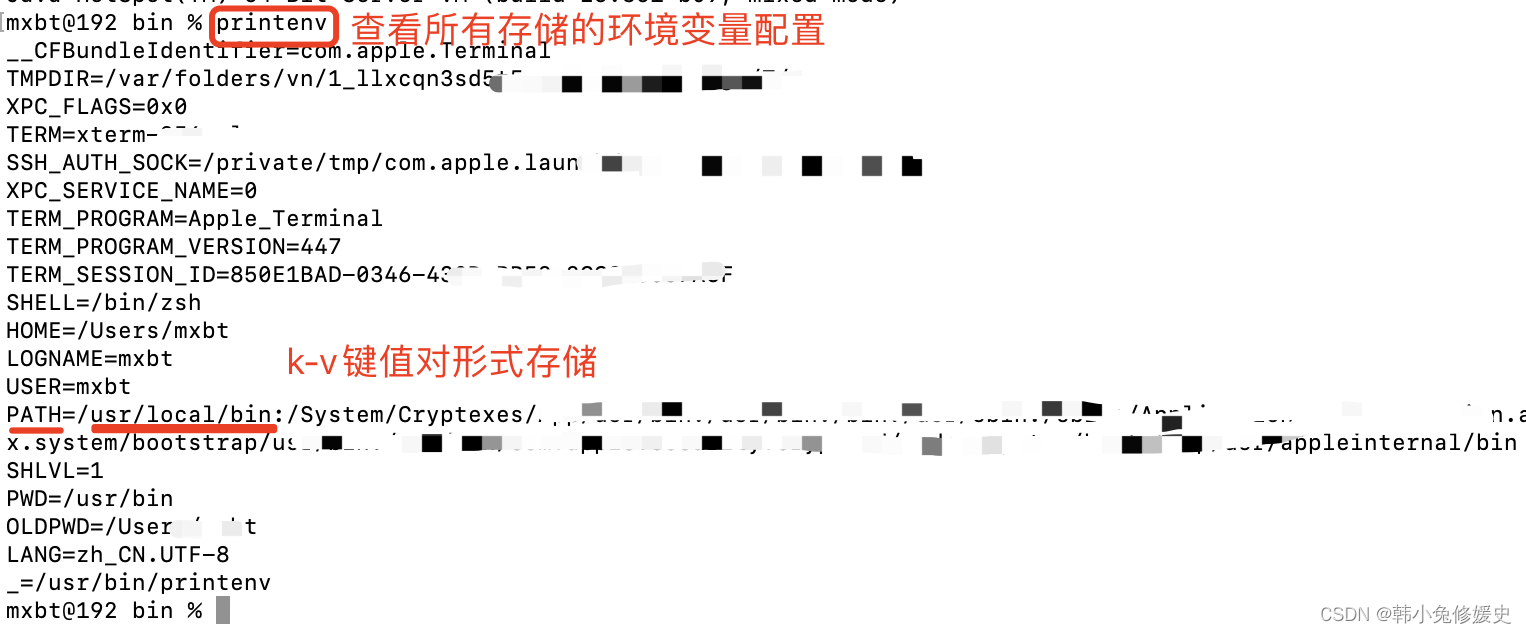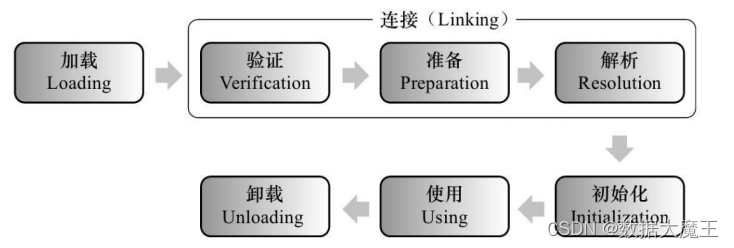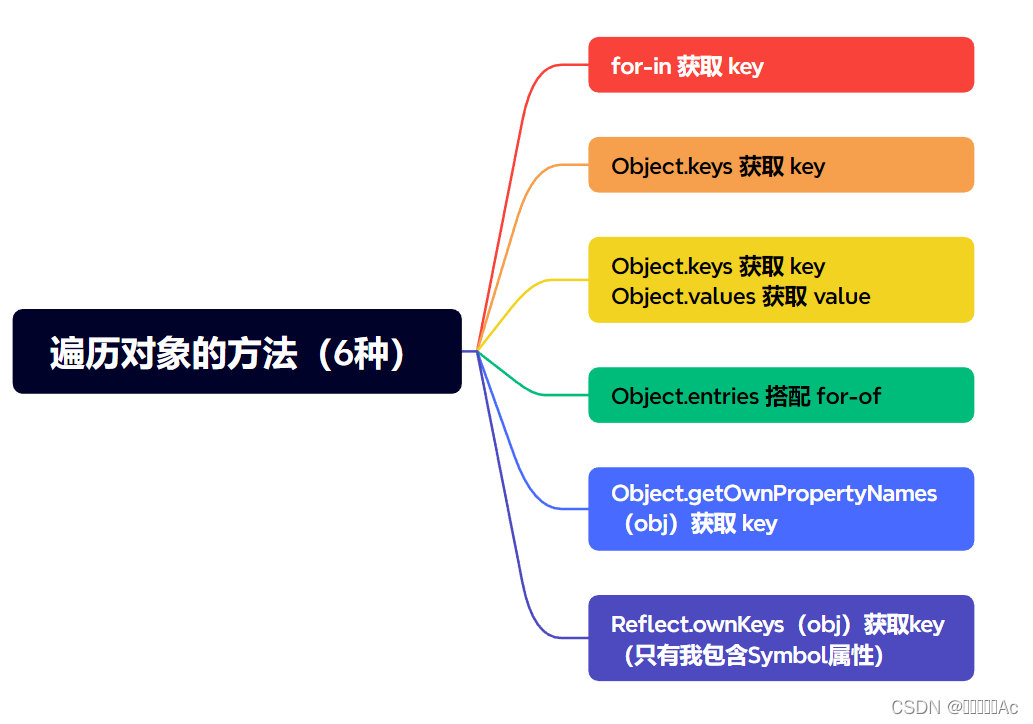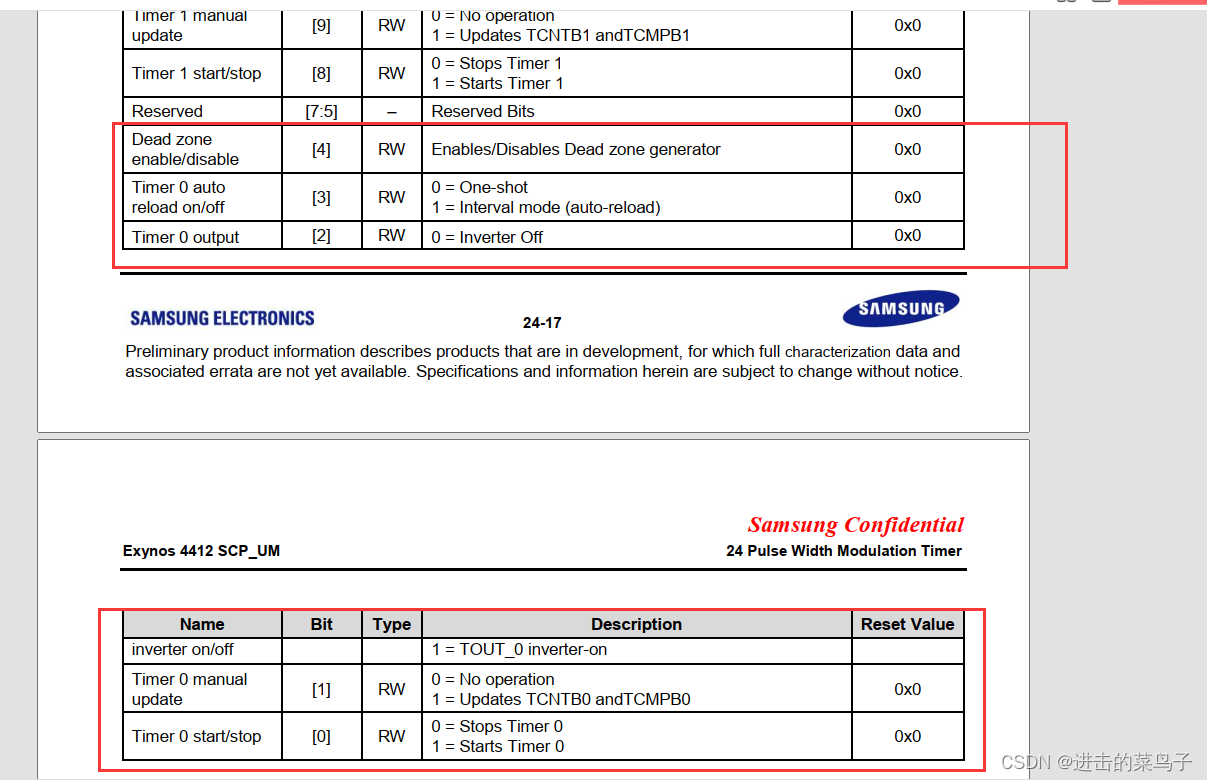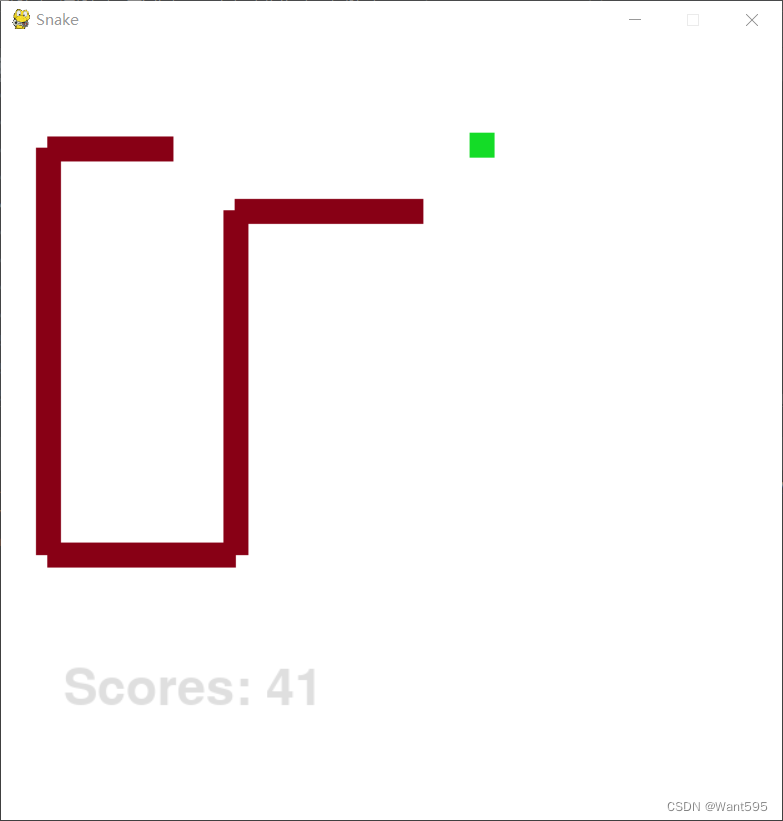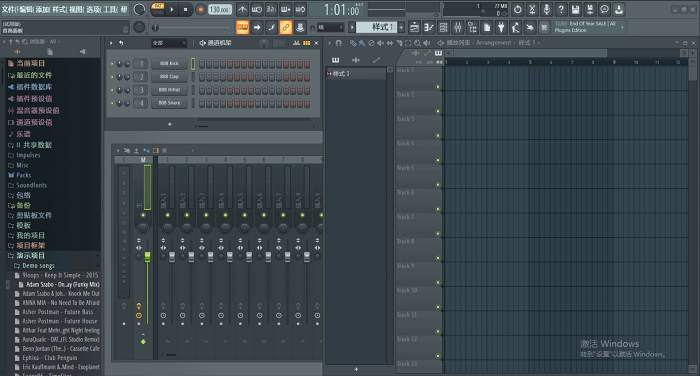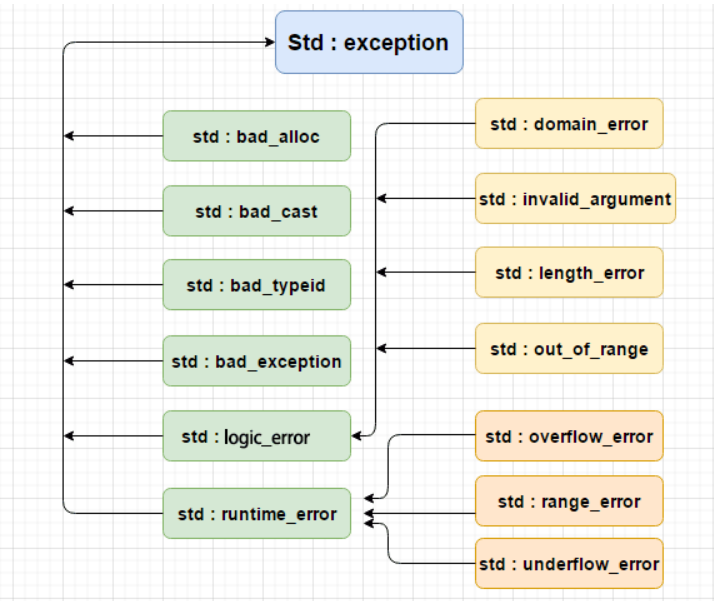目录
一、窗口函数的知识点
1.1 窗户函数的定义
1.2 窗户函数的语法
1.3 前后函数:lag/lead
二、实际案例
2.1 股票的波峰波谷
0 问题描述
1 数据准备
2 数据分析
3 小结
2.2 前后列转换(面试题)
0 问题描述
1 数据准备
2 数据分析
3 小结
一、窗口函数的知识点
1.1 窗户函数的定义
窗口函数可以拆分为【窗口+函数】。窗口函数官网指路:LanguageManual WindowingAndAnalytics - Apache Hive - Apache Software Foundation![]() https://cwiki.apache.org/confluence/display/Hive/LanguageManual+WindowingAndAnalytics
https://cwiki.apache.org/confluence/display/Hive/LanguageManual+WindowingAndAnalytics
- 窗口:限定函数的计算范围(窗口函数:针对分组后的数据,从逻辑角度指定计算的范围,并没有从物理上真正的切分,只有group by 是物理分组,真正意义上的分组)
- 函数:计算逻辑
- 窗口函数的位置:跟sql里面聚合函数的位置一样,from -> join -> on -> where -> group by->select 后面的普通字段,窗口函数 -> having -> order by -> lmit 。 窗口函数不能跟聚合函数同时出现。聚合函数包括count、sum、 min、max、avg。
- sql 执行顺序:from -> join -> on -> where -> group by->select 后面的普通字段,聚合函数-> having -> order by -> limit
1.2 窗户函数的语法
<窗口函数>window_name over ( [partition by 字段...] [order by 字段...] [窗口子句] )
- window_name:给窗口指定一个别名。
- over:用来指定函数执行的窗口范围,如果后面括号中什么都不写,即over() ,意味着窗口包含满足where 条件的所有行,窗口函数基于所有行进行计算。
- 符号[] 代表:可选项; | : 代表二选一
- partition by 子句: 窗口按照哪些字段进行分组,窗口函数在不同的分组上分别执行。分组间互相独立。
- order by 子句 :每个partition内部按照哪些字段进行排序,如果没有partition ,那就直接按照最大的窗口排序,且默认是按照升序(asc)排列。
- 窗口子句:显示声明范围(不写窗口子句的话,会有默认值)。常用的窗口子句如下:
rows between unbounded preceding and unbounded following; -- 上无边界到下无边界(一般用于求 总和)
rows between unbounded preceding and current row; --上无边界到当前记录(累计值)
rows between 1 preceding and current row; --从上一行到当前行
rows between 1 preceding and 1 following; --从上一行到下一行
rows between current row and 1 following; --从当前行到下一行ps: over()里面有order by子句,但没有窗口子句时 ,即: <窗口函数> over ( partition by 字段... order by 字段... ),此时窗口子句是有默认值的-> rows between unbounded preceding and current row (上无边界到当前行)。
此时窗口函数语法:<窗口函数> over ( partition by 字段... order by 字段... ) 等价于
<窗口函数> over ( partition by 字段... order by 字段... rows between unbounded preceding and current row)
需要注意有个特殊情况:当order by 后面跟的某个字段是有重复行的时候, <窗口函数> over ( partition by 字段... order by 字段... ) 不写窗口子句的情况下,窗口子句的默认值是:range between unbounded preceding and current row(上无边界到当前相同行的最后一行)。
因此,遇到order by 后面跟的某个字段出现重复行,且需要计算【上无边界到当前行】,那就需要手动指定 窗口子句 rows between unbounded preceding and current row ,偷懒省略窗口子句会出问题~
ps: 窗口函数的执行顺序是在where之后,所以如果where子句需要用窗口函数作为条件,需要多一层查询,在子查询外面进行。
【例如】求出登录记录出现间断的用户Id
select
id
from (
select
id,
login_date,
lead(login_date, 1, '9999-12-31')
over (partition by id order by login_date) next_login_date
--窗口函数 lead(向后取n行)
--lead(column1,n,default)over(partition by column2 order by column3) 查询当前行的后边第n行数据,如果没有就为null
from (--用户在同一天可能登录多次,需要去重
select
id,
date_format(`date`, 'yyyy-MM-dd') as login_date
from user_log
group by id, date_format(`date`, 'yyyy-MM-dd')
) tmp1
) tmp2
where datediff(next_login_date, login_date) >=2
group by id;1.3 前后函数:lag/lead
lead和lag函数,这两个函数一般用于计算差值。
-- 向前偏移n行,如果取不到值就取得default
lag(column,n,default) over(partition by order by) as lag_test
-- 向后偏移n行,如果取不到值就取得default
lead(column,n,default) over(partition by order by) as lead_test二、实际案例
2.1 股票的波峰波谷
0 问题描述
求股票的波峰Crest 和 波谷trough
波峰:当天的股票价格大于前一天和后一天
波谷:当天的股票价格小于前一天和后一天1 数据准备
create table if not exists table2
(
id int comment '股票id',
dt string comment '日期',
price int comment '价格'
)
comment '股票价格波动信息';
insert overwrite table table2 values
(1,'2019-01-01',10001),
(1,'2019-01-03',1001),
(1,'2019-01-02',1001),
(1,'2019-01-04',1000),
(1,'2019-01-05',1002),
(1,'2019-01-06',1003),
(1,'2019-01-07',1004),
(1,'2019-01-08',998),
(1,'2019-01-09',997),
(2,'2019-01-01',1002),
(2,'2019-01-02',1003),
(2,'2019-01-03',1004),
(2,'2019-01-04',998),
(2,'2019-01-05',999),
(2,'2019-01-06',997),
(2,'2019-01-07',996);2 数据分析
此题容易理解,利用lag()和lead()函数便可以解决。
select
id,
dt,
price,
case
when price > lag_price and price > lead_price then 'crest'
when price < lag_price and price < lead_price then 'trough'
end as price_type
from (
select
id,
dt,
price,
lag(price, 1) over (partition by id order by dt) as lag_price,
lead(price, 1) over (partition by id order by dt) as lead_price
from table2
) tmp1;3 小结
lead和lag函数一般用于计算当前行与上一行,或者当前行与下一行之间的差值。在用户间断登陆问题中也遇到过此函数。指路:HiveSQL题——用户连续登陆-CSDN博客文章浏览阅读220次,点赞4次,收藏3次。HiveSQL题——用户连续登陆https://blog.csdn.net/SHWAITME/article/details/135900251?spm=1001.2014.3001.5501
2.2 前后列转换(面试题)
0 问题描述
表temp包含A,B 两列,使用SQL对该B列进行处理,形成C列。按照A列顺序,B列值不变,C列累计技术 B列值变化,则C列重新开始计数,如图所示
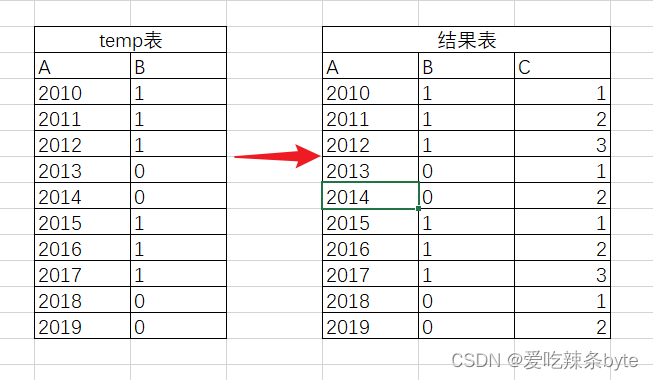
1 数据准备
with table4 as (
select 2010 as A,1 as B
union all
select 2011 as A,1 as B
union all
select 2012 as A,1 as B
union all
select 2013 as A,0 as B
union all
select 2014 as A,0 as B
union all
select 2015 as A,1 as B
union all
select 2016 as A,1 as B
union all
select 2017 as A,1 as B
union all
select 2018 as A,0 as B
union all
select 2019 as A,0 as B
)2 数据分析
with table4 as (
select 2010 as A,1 as B
union all
select 2011 as A,1 as B
union all
select 2012 as A,1 as B
union all
select 2013 as A,0 as B
union all
select 2014 as A,0 as B
union all
select 2015 as A,1 as B
union all
select 2016 as A,1 as B
union all
select 2017 as A,1 as B
union all
select 2018 as A,0 as B
union all
select 2019 as A,0 as B
)
select
A,
B,
row_number() over (partition by T order by A) as C
from (
select
A,
B,
--over (order by A) 本质是 :over(order by rows between unbounded preceding and current row )
--省略的是:上无边界到当前行
sum(change) over (order by A) T
from (
select
A,
B,
-- 向上取一行,取不到的记为0
lag(B, 1, 0) over (order by A) as Lag,
case
when B <> lag(B, 1, 0) over (order by A) then 1
else 0
end as change
from table4
) tmp1
) tmp2;3 小结
lead /lag函数常用于差值计算。





